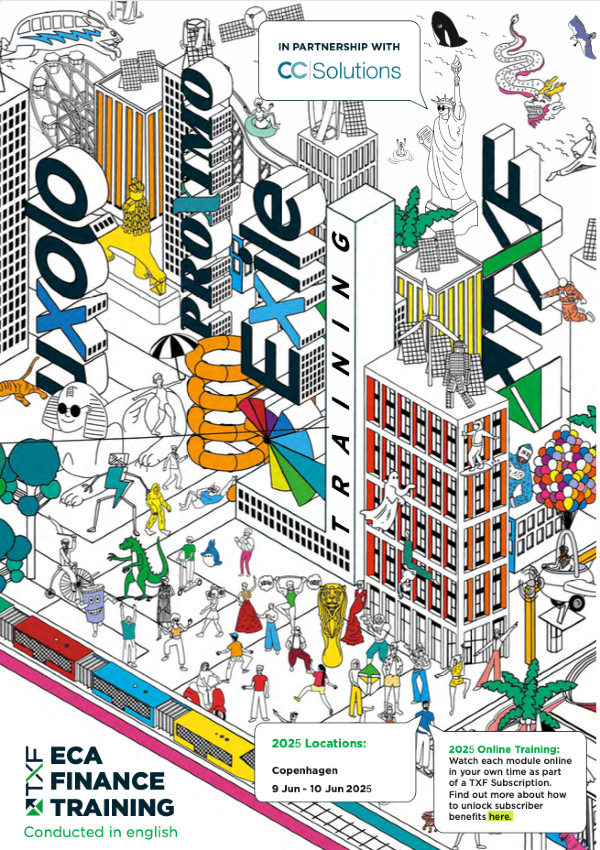Different paths
Are multilateral development banks (MDBs) and export credit agencies (ECAs) pulling in the same direction when it comes to energy transition? The PR says they are – the deal flow says otherwise.

Of the plethora of public finance institutions across the globe, multilateral development banks (MDBs) lend the least to fossil fuel projects. And the amount they are lending is shrinking according to a report by Oil Change International (OCI): “MDBs provided on average $3.3 billion a year to fossil fuel projects from 2020 to 2022, a significant decrease from their 2017 to 2019 average of $9.7 billion per year.”
Similarly, “MDB support for clean energy was $20.3 billion per year from 2020 to 2022, 3.3 times the support for fossil fuels.” In 2022 MDBs provided $26 billion for clean energy finance, the largest amount since OCI began tracking them in 2008.
Both trends appear to be going in the right direction, albeit some more acceleration would certainly help if the International Energy Agency’s (IEA) 1.5ºC-compatible Net Zero Emissions (NZE) energy scenario is to be met.
The same trend is arguably true of the export credit agency market in the oil and gas sector – albeit the numbers are much, much higher. According to TXF data ECAs provided at least $60.3 billion of support to the oil and gas sector in the period 2020 to 2022 – an average of $20 billion per year and equivalent to roughly 6.3 times what the MDB market provided each year in the same period.
While the ECA oil and gas support 2020-2022 period is around $20 billion lower in volume than 2017-2019, taking into account the oil and gas market putting final investment decisions on hold during the pandemic, 2020-2022 could have been much higher had the market continued as normal.
The numbers for MDBs and ECAs clean energy lending 2020 to 2022 also differ even more radically. In that period ECAs supported $43 billion of renewables volume – around $20 billion less than MDBs.
So are export credit agencies and MDBs pulling in different energy transition directions? The fact that the recently overhauled OECD Arrangement for ECAs has such a heavy focus on energy transition suggests their performance has been less than stellar to date (participants in the Arrangement are Australia, Canada, the European Union, Japan, South Korea, New Zealand, Norway, Switzerland, Turkey, UK and the US – basically the G7-plus).
The reform package expands the scope of green or climate friendly projects eligible for longer repayment terms under the Climate Change Sector Understanding (CCSU). It also ups the maximum repayment term to 22 years for CCSU-eligible projects and 15 years for most other projects. Further repayment flexibilities are also to be introduced and the minimum premium rates for credit risk for longer repayment terms and obligors with a higher credit risk rating are to be adjusted.
The reforms have been widely welcomed. But will they end a key antagonism at the heart of many sovereign energy transition strategies – what is promised on the global stage at events like COP, and what happens at the level of individual sovereign energy and public finance policy.
MDBs get a lot of grief about their role in fossil fuel finance – not just from NGOs but their own sovereign shareholders. For example, in April the G7 called on MDBs to ensure the full alignment of all their financing activities with the goals of the Paris Agreement, the implication being they hadn’t been.
But those same sovereign shareholders tend to keep their individual state-backed export credit agency activities relatively quiet when it comes to fossil fuels.
The TXF perspective
Not all fossil fuels get the same treatment. Gas still has transition fuel status, as does blue hydrogen – albeit the methane emissions science says neither should have. So ECA support for transition status LNG deals – although arguably misplaced given the vast profits oil and gas developers are making in the current energy crisis – is not surprising given their political masters’ concerns over energy security since Russia’s invasion of Ukraine.
But when it comes to oil, the hypocrisy really begins to set in. For example, why are Kexim, K-Sure, US Exim and SACE still backing Pertamina’s $6 billion Balikpapan oil refinery upgrade in Indonesia? In debt terms, it’s a $3 billion question and the answer is not development support – Pertamina reported $3.8 billion in net income for 2022, an 86% jump from its 2021 profit, so it is hardly in need of ECA support.
The official line is the upgrade of the refineries will support Indonesia to meet ambitious carbon neutrality targets. The reality is lucrative EPC contracts, equipment and service sales to the project.
Another multi-billion dollar question for ECAs looking to retreat from carbon-intensive projects is TotalEnergies’ controversial $3.5 billion East African Crude Oil Pipeline (EACOP) which has garnered support from SACE, Euler Hermes and Sinosure. The deal, which is expected to close this year, with heavy support from Chexim and China Development Bank.
Of all the OECD export credits agencies SACE appears to be the biggest backslider on fossil fuels. Earlier this year it walked away from a pledge made at COP26 to end support for international fossil fuel projects by the end of 2022. It now plans to continue to provide export credit cover for parts of the oil industry in the short term and has delayed setting a date for ending its backing for the gas sector.
In a global economy where oil and gas companies continue to post record profits every quarter, the volume of ECA lending and cover needs to retreat from oil and gas and provide much more financial clout to clean energy. Perhaps the Arrangement reform will bring ECA lending trends more in line with MDBs. But never underestimate sovereign self-interest as a motivator.





